Content
|
|---|
Description
19 cm. length and a weight between 36 and 44 g..
The Scarlet-chested Parrot (Neophema splendida) It is particularly colorful. Has the “face” and forecrown are bright turquoise blue, darker in the throat and chin.
The upperparts are green. The curvature of the wings is dark blue, wing-coverts are the same blue tone to the face. Primary coverts dark blue-violet. The primaries Black has light blue brainwashed in the foreign bands. The outer edge of the secondaries has a tone blue-green that is mixed with the green of them vane inner and tertiary.
The underparts is dark blue. The chest is bright Scarlet, which is an important recognition feature. The sides of the top of the chest and flanks are green. The rest of the underparts is bright yellow. The bottom of the tail is green, but the tips of the outer tail feathers they are dyed yellow.
The bill is black, irises dark brown. The legs are gray-Brown.
The female is duller than its companion, with the belly and the chest green. The blue color of the face is restricted.
The females and juveniles they often show Wing bars.
The young male need four months to purchase your mature plumage, and retain a youthful glow until the age of 2 years.
Habitat:
The Scarlet-chested Parrot they are usually distributed in arid scrublands that are composed mainly of acacias and eucalyptus. They appreciate, particularly, plants of Mallee (Eucalyptus gracilis) and Mulga (Acacia aneura).
Also live in wooded areas dominated by casuarinas, as well as areas where the soil is covered by Spinifex or large clumps of grass type Triodia.
The Scarlet-chested Parrot do not despise the crests of hills that are equipped with a large number of plants, like the covered Plains of Sea sandwort or Salt grass (Honckenya peploides), What are plants which grow in saline environments.
They tend to find their food on Earth and form relatively consistent flocks outside of the nesting season.
During the breeding season, These birds are not very gregarious, but couples establish their nests in trees not very far from the other.
As with the Turquoise Parrot, the division of labor is well established and the females are responsible for the collection of green leaves that adorn the interior of the nest.
There is no description of the various courtship.
Reproduction:
The season of nesting of the Scarlet-chested Parrot, usually, is carried out between January and August, but these dates can change as the reproduction is influenced, significantly, by climatic conditions, especially the rains.
The nest It is placed in a tree cavity, above all a eucalyptus, between 2,5 and 8 meters above the ground.
The Scarlet-chested Parrot they are very loose colonies.
The spawning includes of 3 to 5 eggs and your incubation lasts a few 18 days. The most numerous litters, sometimes, provide 6 eggs.
The chicks are altricial, they take flight to leave his place of birth 30 days after hatching.
Food:
The Scarlet-chested Parrot they have a diet almost exclusively granivore.
These birds acquire most of the moisture you need eating Succulents as Calandrinia. If this practice is not enough, These parrots are like other species of arid lands, that is to say, that they are going to supply themselves with liquid directly to the sources and water points.
Menu details are poorly known, but it is known that most feed on seeds of plants such as Triodia, Newcastelia, haloragis, Acacia and Stipa.
Distribution:
Size of the area of distribution (reproduction / resident): 1.280.000 km2
This rare Nomad has a wide area of historical distribution, but it is probable that now concentrate on parts with more vegetation of the Great Victoria desert, with records from Kalgoorlie, Western Australia, the East, through the North of the Nullarbor plain in Southern Australia, North of the Eyre Peninsula, about Port Augusta and in areas of Mallee to the North of the murray river, to the Northwest of Victoria, West of New South Wales, Southwest of Queensland and MacDonnell Ranges of the Northern Territory.
A flock of 240 bird was recently recorded in the Great Victoria desert.
Conservation:
• Current category of the Red List of the UICN: Least concern
• Population Trend: Stable
The inroads among 1939 and 1996 They show that these birds are able to form very rapidly large gatherings.
Disturbances affecting the natural environment had a negative impact on the evolution of the active population. The use of aquatic resources for the livestock and competition in this field with the Bourke's Parrot they have also caused damage.
Poaching and marketing of this bird have also had devastating consequences: more than 25.000 Scarlet-chested Parrot they are in captivity in Australia.
Its population in freedom is estimated at around 10,000 specimens.
"Scarlet-chested Parrot" in captivity:
The Scarlet-chested Parrot is a species peaceful and silent. This beautiful parakeet ends up gaining confidence with your caregiver, It is only a matter of time. It is also easy to maintain and almost do not eat wood. It is resistant to cold (light Frost), but it is very sensitive to humidity, fog, and air currents.
The Scarlet-chested Parrot they feed on the ground; It is convenient to use of vermicides, deworming them regularly. They are also susceptible to ocular infections and vulnerable to infections of Candida.
The tastes for the bathroom vary from one individual to another.
In terms of their longevity, according to sources, a sample lived during 14 years in captivity. The same sources report that these parakeets can live up to 25,4 years in captivity, but this has not been verified; the same study also ensures that the Scarlet-chested Parrot You can play from around 1 year of age in captivity.
The mutations:
-
• Aqua: autosomal recessive
• Turquoise: autosomal recessive
• Blue: autosomal recessive
• Pastel: autosomal recessive (not in Europe)
• Cinnamon: recessive sex-linked
• Pale: recessive sex-linked
• Mixed: autosomal dominant
• Misty: autosomal co-dominant (PAS en Europe)
• Gris: autosomal dominant
• Mixed: autosomal recessive
• Fallow (bronze fallow): autosomal recessive
• INO: recessive sex-linked
• Platinum: recessive sex-linked
• Violet: co-dominante autosomique
• Dark factor: co-autosomal dominant
Alternative names:
– Scarlet-chested Parrot, Scarlet chested Parrot, Scarlet-breasted Parrot, Scarlet-chested Parakeet, splendid parakeet (ingles).
– Perruche splendide, Euphème resplendissante, Perruche resplendissante (French).
– Glanzsittich (German).
– Periquito-esplêndido (Portuguese).
– Papagayo Espléndido, Periquito Espléndido (español).
scientific classification:
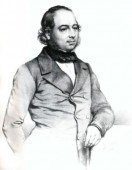
– Order: Psittaciformes
– Family: Psittaculidae
– Genus: Neophema
– Scientific name: Neophema splendida
– Citation: (Gould, 1841)
– Protonimo: E uphema splendida
Images “Scarlet-chested Parrot”:
Videos "Scarlet-chested Parrot"
————————————————————————————————
“Scarlet-chested Parrot” (Neophema splendida)
Sources:
– Avibase
– Parrots of the World – Forshaw Joseph M
– Parrots A Guide to the Parrots of the World – Tony Juniper & Mike Parr
– Birdlife
– Photos:
(1) – Adult male at Cincinnati zoo, USA By Ltshears (Own work) [Public domain], via Wikimedia Commons
(2) – Taken at the Cincinnati Zoo By Greg Hume (Own work) [CC BY-SA 3.0], via Wikimedia Commons
(3) – Immature male on the left and an immature female on the right at Gluepot Reserve, South Australia By David Cook Wildlife Photography from Wamboin, NSW, Australia [CC BY 2.0], via Wikimedia Commons
(4) – Immature male on the left and an immature female on the right at Gluepot Reserve, South Australia By David Cook Wildlife Photography from Wamboin, NSW, Australia [CC BY 2.0], via Wikimedia Commons
(5) – Scarlet-chested Parrot “Neophema splendida” at Cincinnati Zoo By Ltshears (Own work) [CC BY-SA 3.0], via Wikimedia Commons
(6) – By T.H. Maguire (1821–1895) (http://www.birdresearch.dk/dk/jgould.htm) [Public domain], via Wikimedia Commons
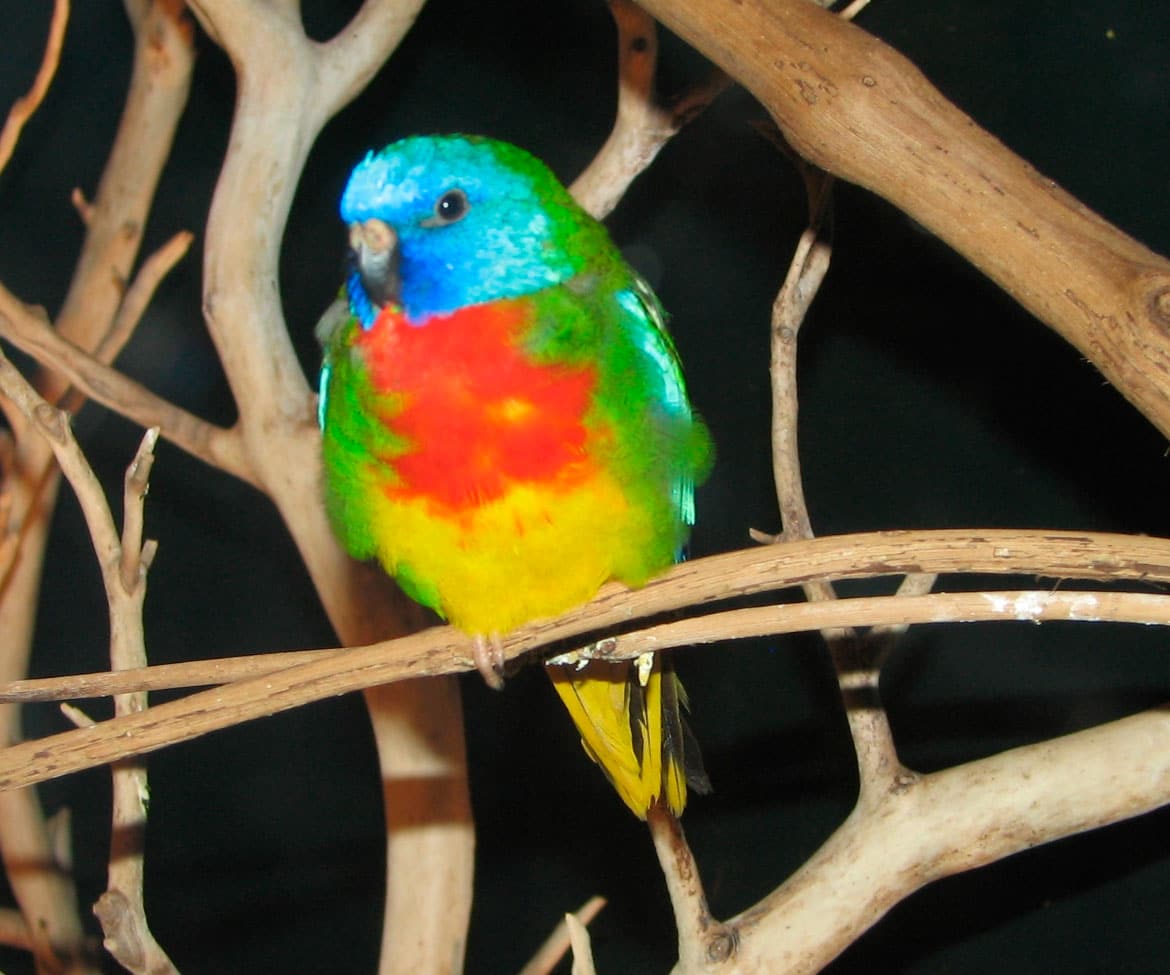

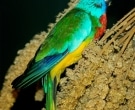
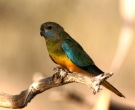
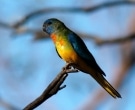
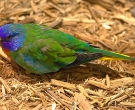

hello and congratulations brother, What a beautiful story,Greetings!!! create a few Splendidos here in Brazil ,Rosellas and Hed hamped ~ and Austral Parakeets. English type for genetic contests judge Jorge Pina great friend of mine for more than 30 anos. but my passion beyond the POAs and the splendidos and looking for splendid mutation couple Violet true almost purple half lilac,Here the violets that say they have is a cobalt blue tight and call Violet!!!Funny but seen in Belgium the true Violets !Well this splendid Violet color trias I spoke??? If you have or know who has let me know please I want to purchase them!!! Thank you for your kind attention and may God and I bless you and your family! I await contact!!!